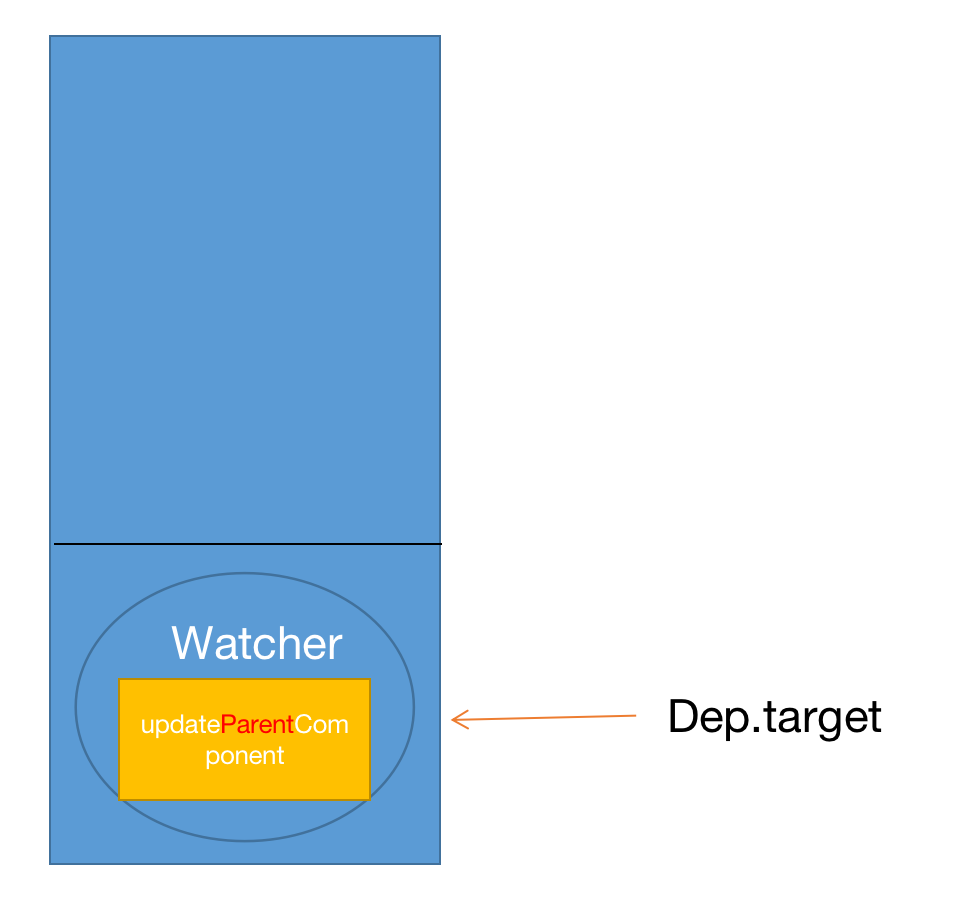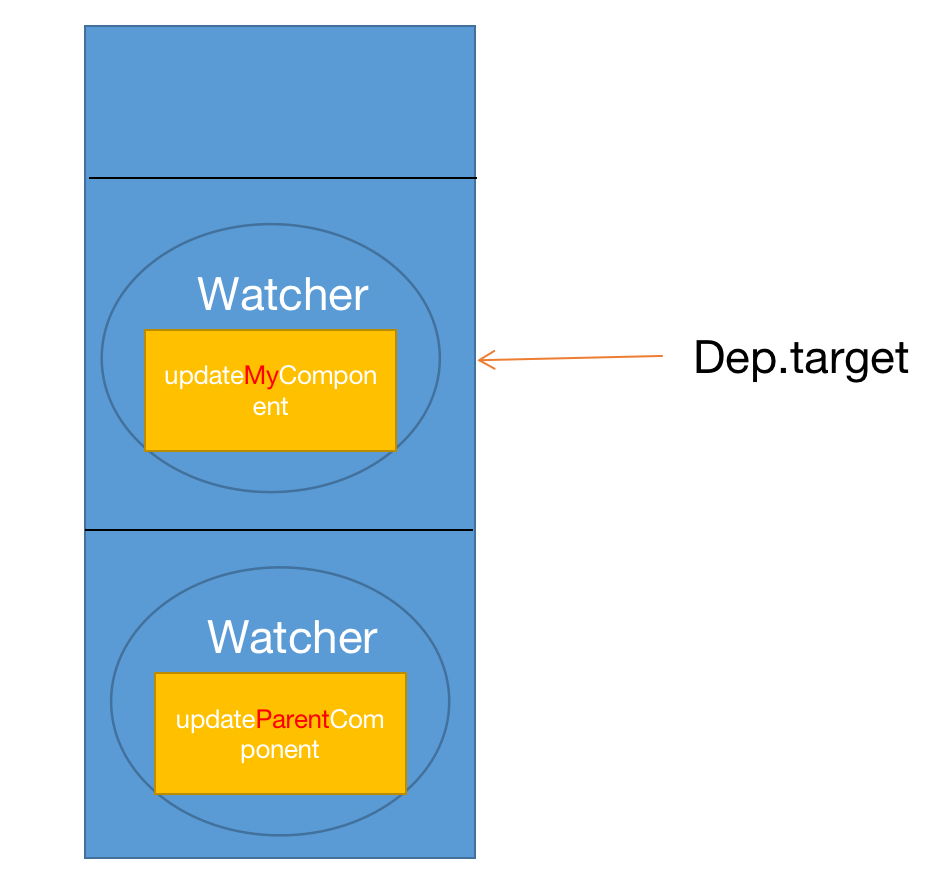接 Vue2剥丝抽茧-响应式系统、Vue2剥丝抽茧-响应式系统之分支切换,还没有看过的同学需要看一下。
场景
在 Vue 开发中肯定存在组件嵌套组件的情况,类似于下边的样子。
1 | <!-- parent-component --> |
回到我们之前的响应式系统,模拟一下上边的情况:
1 | import { observe } from "./reactive"; |
可以先 1 分钟考虑一下上边输出什么?
首先回忆一下 new Watcher 会做什么操作。
第一步是保存当前函数,然后执行当前函数前将全局的 Dep.target 赋值为当前 Watcher 对象。

接下来执行 getter 函数的时候,如果读取了相应的属性就会触发 get ,从而将当前 Watcher 收集到该属性的 Dep 中。

执行过程
1 | import { observe } from "./reactive"; |
我们再一步一步理清一下:
new Watcher(updateParentComponent);将
Dep.target赋值为保存了updateParentComponent函数的Watcher。接下来执行
updateParentComponent函数。new Watcher(updateMyComponent);将
Dep.target赋值为保存了updateMyComponent函数的Watcher。接下来执行
updateMyComponent函数。1
2
3
4
5
6const updateMyComponent = () => {
console.log("子组件收到:", data.inner);
};
// 读取了 inner 变量。
// data.inner 的 Dep 收集当前 Watcher(保存了 `updateMyComponent` 函数)1
2
3
4
5
6const updateParentComponent = () => {
new Watcher(updateMyComponent);
console.log("父组件收到:", data.text);
};
// 读取了 text 变量。
// data.text 的 Dep 收集当前 Watcher (保存了 `updateMyComponent` 函数)
data.text = "hello, liang";触发
text的set函数,执行它依赖的Watcher,而此时是updateMyComponent函数。
所以上边代码最终输出的结果是:
1 | 子组件收到: 内部 // new Watcher(updateMyComponent); 时候输出 |
然而子组件并不依赖 data.text,依赖 data.text 的父组件反而没有执行。
修复
上边的问题出在我们保存当前正在执行 Watcher 时候使用的是单个变量 Dep.target = null; // 静态变量,全局唯一。
回忆一下学习 C 语言或者汇编语言的时候对函数参数的处理:
1 | function b(p) { |
当函数发生嵌套调用的时候,执行 a 函数的时候我们会先将参数压入栈中,然后执行 b 函数,同样将参数压入栈中,b 函数执行完毕就将参数出栈。此时回到 a 函数就能正确取到 p 参数的值了。
对应于 Watcher 的收集,我们同样可以使用一个栈来保存,执行函数前将 Watcher 压入栈,执行函数完毕后将 Watcher 弹出栈即可。其中,Dep.target 始终指向栈顶 Watcher ,代表当前正在执行的函数。
回到 Dep 代码中,我们提供一个压栈和出栈的方法。
1 | import { remove } from "./util"; |
然后 Watcher 中,执行函数之前进行入栈,执行后进行出栈。
1 | import { pushTarget, popTarget } from "./dep"; |
测试
回到开头的场景,再来执行一下:
1 | import { observe } from "./reactive"; |
执行 new Watcher(updateParentComponent); 的时候将 Watcher 入栈。

进入 updateParentComponent 函数,执行 new Watcher(updateMyComponent); 的时候将 Watcher 入栈。

执行 updateMyComponent 函数,data.inner 收集当前 Dep.target ,执行完毕后 Watcher 出栈。

继续执行 updateParentComponent 函数,data.text 收集当前 Dep.target 。
此时依赖就变得正常了,data.text 会触发 updateParentComponent 函数,从而输出如下:
1 | 子组件收到: 内部 |
总结
今天这个相对好理解一些,通过栈解决了嵌套调用的情况。
